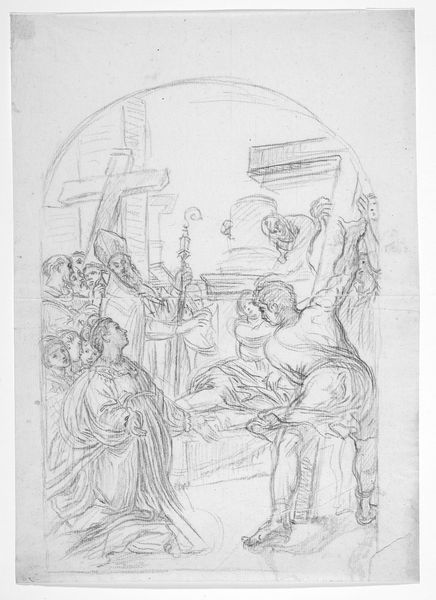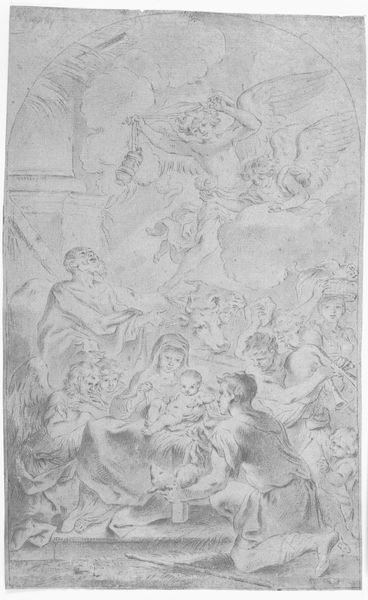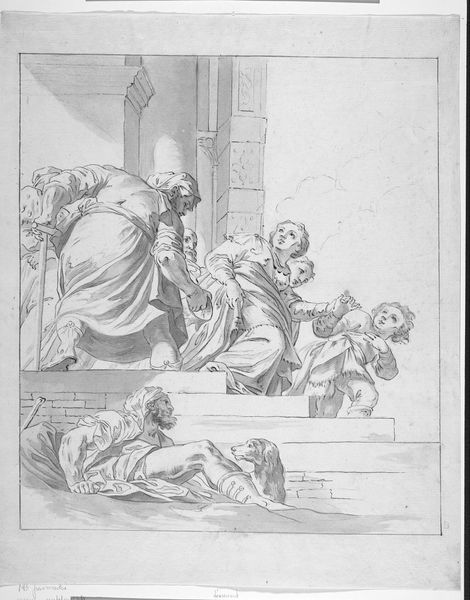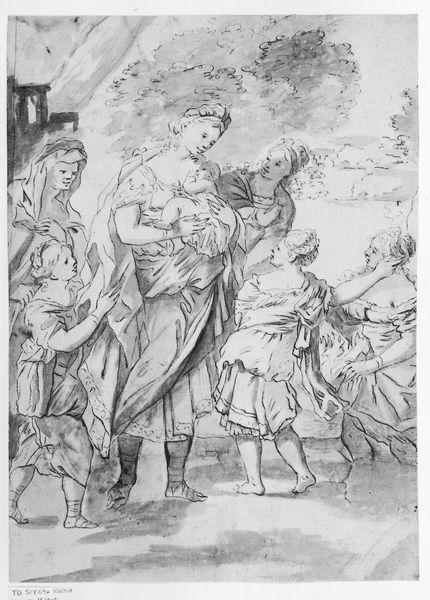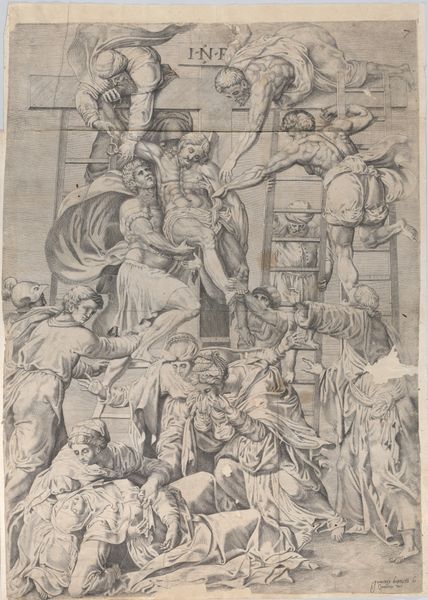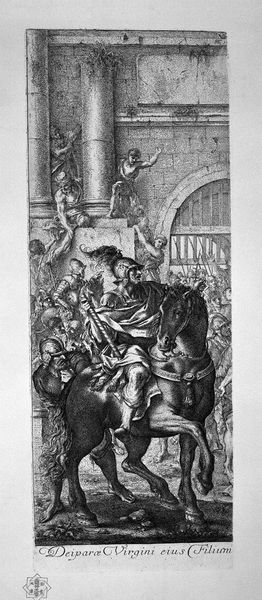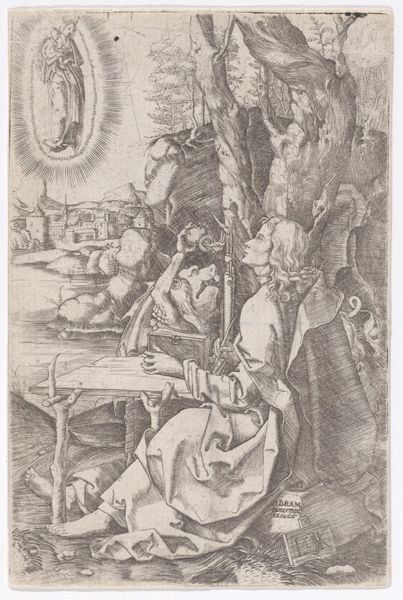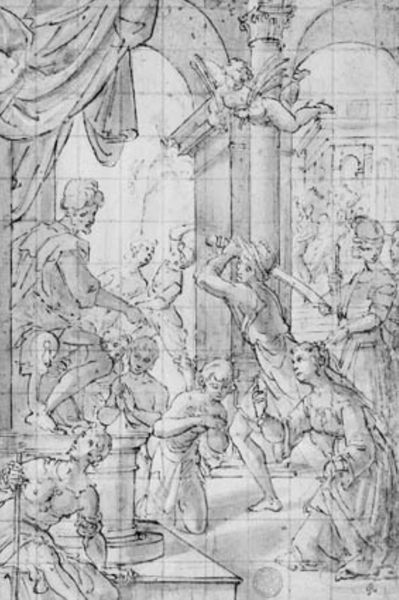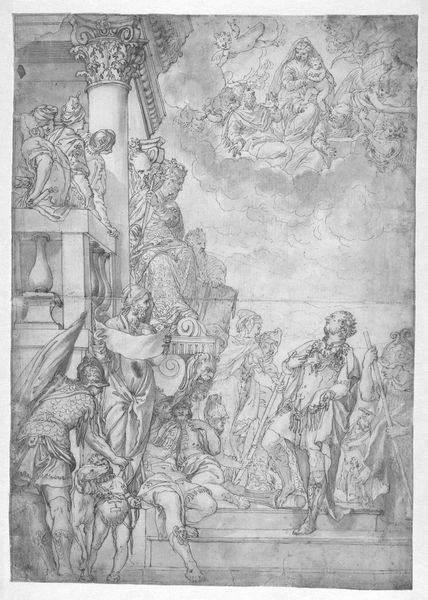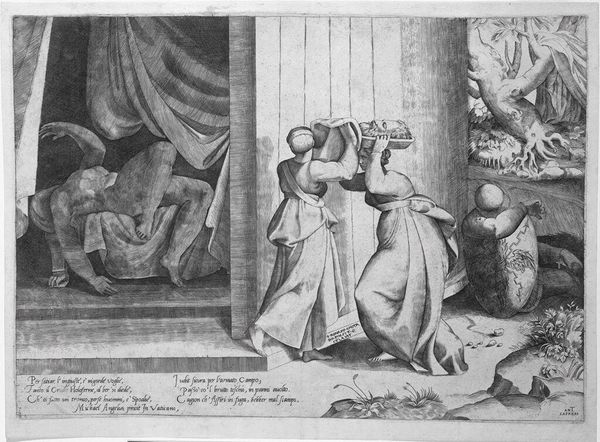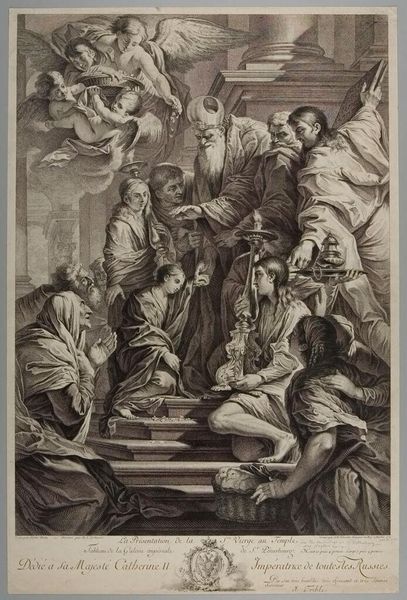
drawing, pencil
#
drawing
#
baroque
#
figuration
#
pencil drawing
#
pencil
#
genre-painting
#
history-painting
Dimensions: 416 mm (height) x 336 mm (width) (bladmaal)
Curator: At first glance, I find this composition both odd and intriguing; like looking at different acts of a play set in vastly different places. The figures above ground level contrast starkly with the activity below the arches, especially the poor fellow who looks as if he is both carrying and being carried! What do you make of it? Editor: That’s funny! My initial impression is a hushed sort of reverence despite the busy composition. It feels biblical, but in a surprisingly down-to-earth setting. You're right about that poor fellow—he looks exhausted. Curator: Yes, indeed, it depicts a biblical scene: The Visitation. The Statens Museum for Kunst holds this drawing by Giovanni Agostino Ratti. It was composed sometime between 1699 and 1775, using pencil. Considering the Baroque style, there's something about its use of mundane detail that deviates somewhat from expectations, no? Editor: Absolutely. It's got that classic Baroque drama, but softened, domesticated, even. The woman carrying the basket almost seems like she’s popped in from a completely different story. Then the rooster scratching around by that archway. There is such an odd mix of high drama and daily life here, that, to me, it becomes very relatable! Curator: I would agree. Those unexpected, humble details woven into a divine narrative speak volumes. Think about the contrast of divinity entering our plane but, on our plane, an angel of the Lord still needs help getting his butt up a steep rocky embankment. Editor: Ha! I like that: "angel butt." That might be an unpopular phrase on the placards! But I see exactly what you mean: a divine event viewed through a very human lens. Curator: In some respects, it makes it more real, doesn't it? This tension makes one contemplate how symbols gain greater force in reality—they lose any vestige of meaning if people don’t embrace their humanity within. Editor: Definitely, this pencil rendering of The Visitation gets under my skin; it whispers. The genius of the piece, for me, is in those ordinary details that somehow magnify the extraordinary core of the event itself. Curator: And I am struck by the symbols Giovanni employs, their continued pertinence—both the hallowed visitation narrative, and also those unstudied moments of quotidian life represented below, the angel in distress, and all the attendant questions about the burden we all carry, and where we put them down. Editor: Right? That quiet balancing act feels profoundly modern, even now.
Comments
No comments
Be the first to comment and join the conversation on the ultimate creative platform.
